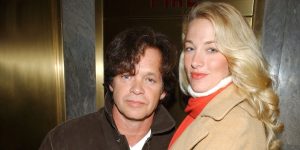Rutger Oelsen Hauer was born on 23 January 1944, in Breukelen, Netherlands, and is a writer, environmentalist, and actor, best known for his many film appearances, but he’s also been a part of numerous Dutch and English television series; some of his most popular works include “Blade Runner” and “Sin City”. All of his efforts have helped put his net worth to where it is today.
How rich is Rutger Hauer? As of early-2017, sources inform us of a net worth that is at $10 million, mostly earned through a successful career as an actor. Other works he’s been a part of include “Nighthawks”, “The Hitcher”, and “Buffy the Vampire Slayer”. All of these achievements have ensured the position of his wealth.
Rutger Hauer Net Worth $10 million
Hauer’s parents were drama teachers, busy with their careers, so he grew up in Amsterdam and attended a Waldorf school while being brought up by nannies. At the age of 15, he ran away from home and spent a year on a freighter. After returning home, he worked as an electrician while taking acting classes at night school, but he then served in the Royal Netherlands Navy.
Rutger joined an experimental troupe and stayed with them for five years until he was cast in the medieval action drama entitled “Floris” in 1969, which made him famous in the Netherlands. Later, he would reprise this role in 1975’s “Floris von Rosemund” which is a German remake. He also starred in the film “Turkish Delight” which made him known around the world, and this led him to try to pursue roles in international films. He appeared in “The Wilby Conspiracy” in a supporting role but unnoticed by Hollywood. He then returned to appear in various Dutch films such as “Katie Tippei”, “Soldier of Orange” and “Spetters”. His net worth was now established.
In 1981, Hauer appeared in his first American film, “Nighthawks” opposite Sylvester Stallone. He became very popular after appearing in the science fiction film “Blade Runner” directed by Ridley Scott, which launched his career in Hollywood, and he would then appear in “Eureka”, “The Osterman Weekend”, and “Flesh & Blood”, and was also cast with Michelle Pfeiffer in “Ladyhawke”. In 1986, he starred in “The Hitcher”, playing a murdering hitchhiker, which continued to raise his popularity and net worth. He then starred in ”The Legend of the Holy Drinker” and “Blind Fury” which is a martial arts film, but he returned to science fiction in the 1990 “The Blood of Heroes”.
In the 1990s, Rutger appeared in various Guinness commercials, and also in a string of low budget films, but in the music video “On a Night Like This” by Kylie Minogue too. Later on, he would appear in several television productions such as “Escape from Sobibor” which earned him a Golden Globe Award for Best Supporting Actor, and in “Fatherland”, “Merlin” and “Smallville”; his numerous projects would continue to help raise his net worth.
He was honored for his work in 1999 when he was awarded the Dutch “Best Actor of the Century Rembrandt Award”. In 2003, in “Confessions of a Dangerous Mind” he played an assassin, and would continue his villainous roles in “Sin City”. He also starred in “Batman Begins”, and one of his most recent roles is in “True Blood”.
For his personal life, it is known that Hauer has married twice, firstly to Heidi Merz and secondly to Ineke ten Cate in 1985. His daughter is Aysha Hauer who is also an actress. Aside from his acting work, he is an environmentalist, and is an advocate of the release of Paul Watson, sentenced for sinking a whaling vessel. He also established the Rutger Hauer Starfish Association which focuses on AIDS awareness.







Leave a Comment